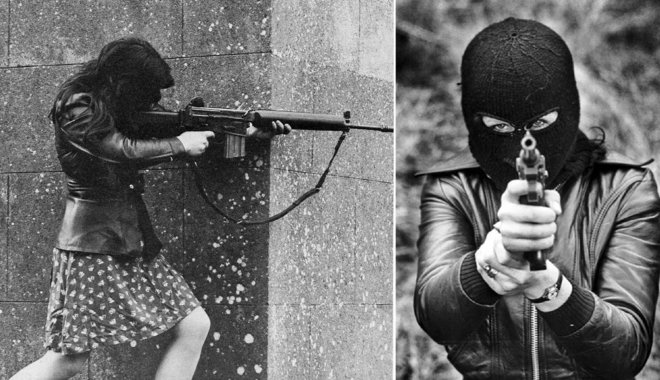
Yesterday was International Women’s Day, so in that spirit, today’s lead-in to our weekly review takes a quick look at the role of women in terrorism.
There is a long history of women’s involvement in terrorism, from the European anarchists of the late 19th century, through the national liberation and leftist revolutionary movements of the 20th century, to far-right and jihadist groups today. Scholar Karla Cunningham, in a 2003 article in the journal Studies in Conflict & Terrorism, argues that across ideological categories, more and more terrorist movements were recruiting women at the same time as women were themselves becoming increasingly motivated to join such groups.
A report produced last year by the Council on Foreign Relations summarizes some of this history:
Throughout history, women have joined and supported violent extremist groups, serving as combatants, recruiters, and fundraisers and in numerous other roles critical to operational success. Although women are often ignored in conventional depictions of violent political actors, they have been active participants in 60 percent of armed rebel groups over the past several decades. In Algeria, for instance, female National Liberation Front fighters evaded checkpoints in the 1950s to deploy bombs at strategic urban targets. In Sri Lanka in the 1990s, all-female battalions earned a reputation for their fierce discipline and ruthless combat. Women represented nearly 40 percent of the Revolutionary Armed Forces of Columbia (FARC), serving in all operational roles, including as combat unit leaders, allowing the group to vastly expand its military capacity.
Women have also helped found militant groups, from Germany’s Baader-Meinhof gang to the Japanese Red Army. Even in cases where women’s leadership was invisible, they frequently provided operationally critical support, ranging from weapons transport to combatant recruitment.
The report goes on to argue that women-led terrorist attacks are both on the rise and are especially effective. For example, the deadliness of female suicide attackers has led Boko Haram to turn to women for close to two-thirds of its suicide operations. A 2009 study found that suicide attacks carried out by women are more lethal, on average, than those carried out by men.
The CFR report also points to similarities between male and female terrorists, especially in terms of why they join violent political movements.
While some women are kidnapped and forcibly conscripted into violence, many voluntarily join extremist groups for reasons similar to those of male recruits, including ideological commitment or social ties. Others join in hopes of gaining freedom and access to resources; in Nigeria, for example, some women joined Boko Haram to receive Koranic education in a region where only 4 percent of girls have the opportunity to finish secondary school.
Now on to this week’s list, which features several entries on the Red Army Faction, an organization in which women played prominent leadership roles.
- March 9, 1985 — Monchengladbach, West Germany: Air Marshal Sir Patrick Hine, commander of the British Royal Air Force in West Germany, escapes an assassination attempt carried out by a Red Army Faction gunman.
- March 11, 2004 — Madrid, Spain: In a series of bomb blasts targeting Madrid trains, 198 people are killed and more than 600 wounded. The Abu Hafs al-Masri Brigade claims responsibility.
- March 12, 1985 — Boblingen, West Germany: A bomb is discovered inside the officer’s club of a US Army base in the German state of Baden-Wurttemberg. The Red Army Faction is suspected.
- March 13, 1981 — Heidelberg, West Germany: The Red Army Faction firebombs the home of journalist Franz Ruch, a writer for a Munich-based weekly new magazine.
- March 14, 2004 — Ashdod, Israel: Near simultaneous attacks by two suicide bombers kill 10 and wound another 18. Hamas and the al-Aqsa Martyr’s Bridge both claim responsibility.